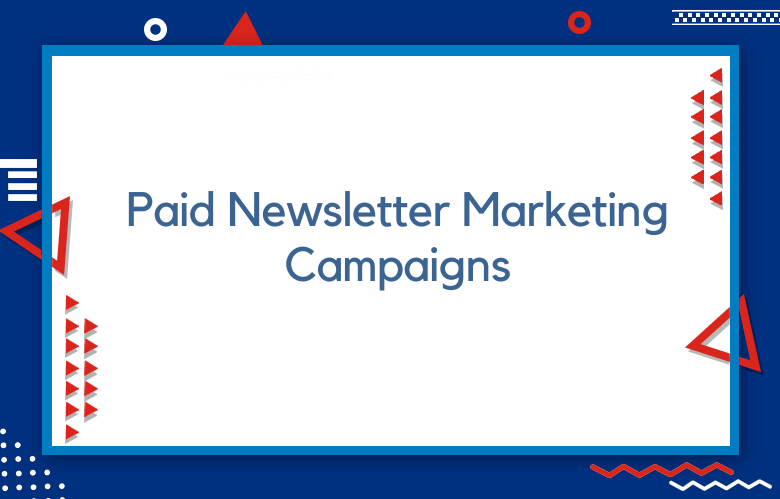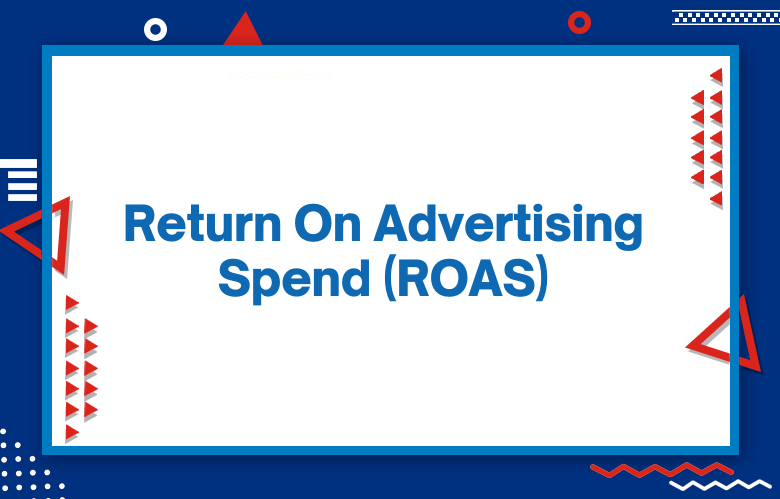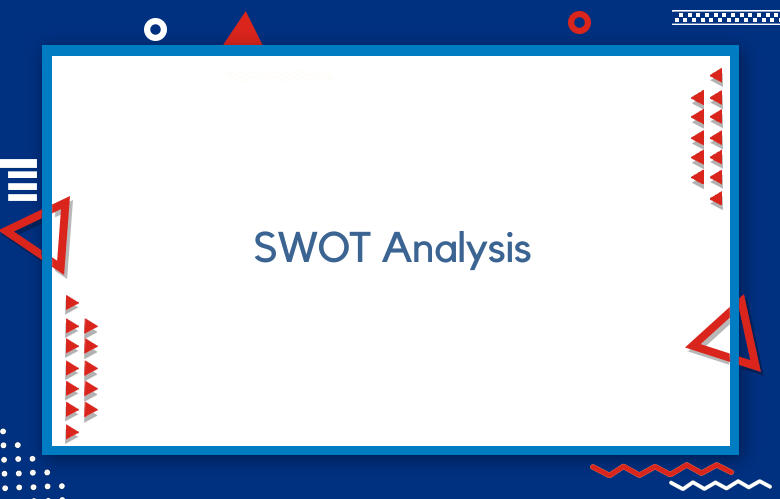How can Businesses Measure the Success of Their Paid Newsletter Marketing Campaigns?

Paid newsletter marketing is increasingly becoming popular to reach customers and potential customers. It’s an effective way to spread your brand’s message, build relationships with subscribers, and generate more leads and sales.
But how do you measure the success of your paid newsletter campaigns?
The first step in measuring success is defining what success looks like for your paid newsletter.
This can be done by setting goals and tracking metrics that help you determine a campaign’s success. Here are some key metrics to consider when measuring the success of your paid newsletter campaigns:
Measuring the Success of Your Paid Newsletter Campaigns
Open Rates
The open rate measures the percentage of people who opened your email from the total number of emails sent.
It is one of the most important indicators of how well an email campaign did because it tells how many people saw it in their inboxes.
A high open rate indicates that people found your content interesting enough to open it up and read it.
Click-Through Rate
Click-through rate (CTR) measures how many people click on a link or button within an email after opening it. CTR is important because it helps determine if people found your content interesting enough to take further action.
If someone clicks on a link or button, they are much more likely to take further action, such as buying a product or subscribing to a service, than someone who reads the email without clicking anything.
Conversion Rate
The conversion percentage measures how many people took further action after clicking on a link or button within an email, such as making a purchase or signing up for a service.
This metric is important because it helps you track which emails resulted in actual conversions and which ones didn’t so you can adjust future campaigns accordingly.
Analytics and Tracking
The first step in measuring your success is to track your analytics. It would help if you were tracking key performance indicators (KPIs) such as open rates, click-through rates, conversion rates, unsubscribe rates, etc.
These metrics will give you a clear indication of how well your paid newsletter campaigns are performing.
For example, if you’re seeing low open rates or high unsubscribe rates, it’s time to reevaluate your strategy and make changes accordingly.
Test Different Strategies
Another way to measure the success of your paid newsletter campaigns is to test different strategies.
For example, you could send out newsletters at different times of the day or test other subject lines to see which ones are more successful.
By experimenting with different approaches and measuring the results, you’ll be able to identify what works best for your business and optimize your campaigns accordingly.
Customer Feedback
Finally, one of the best ways to measure the success of your paid newsletter campaigns is by collecting customer feedback.
Ask customers what they think about your newsletters – what they like and don’t like – so that you can improve and optimize their effectiveness in the future.
Consider conducting surveys or focus groups to gain knowledge.
What is Paid Newsletter Marketing, and how does it work?
Paid newsletter marketing is an effective way to reach potential customers and increase brand awareness.
It involves creating a series of emails regularly delivered to existing or new customers, with content relevant to their interests and needs.
The main objective is to nurture relationships by providing valuable content that drives conversions or encourages further engagement.
Paid newsletter marketing is typically done through email service providers (ESPs) such as MailChimp, Constant Contact, Emma, etc., which offer many features like email design templates, analytics tracking, list segmentation options, and more.
Marketers typically segment their audience to craft successful newsletters based on demographic data such as location, age range, gender, and more.
It allows them to provide tailored content for each segment so the recipient is interested in what’s offered.
Marketers must also decide how often they send newsletters and what content they want to include.
They can choose from industry news updates, product demonstrations and reviews, customer success stories, and more.
When designing emails for paid newsletter campaigns, keeping the user experience in mind is essential.
The goal should be creating emails that are visually appealing and easy to read with clear call-to-actions so users know what actions they need to take next.
Marketers should also analyze open rates, clicks, and other metrics to understand what works best for their audience.
Paid newsletter campaigns enable marketers to track which links were clicked on within a given email to understand what interests their customers most and adjust future campaigns accordingly.
Through careful planning and testing, these campaigns can prove potent tools for driving conversions and increasing sales among existing and potential customers!
How can Paid Newsletters help a Business reach new Customers?
Paid newsletters effectively allow businesses to reach new customers and build brand recognition.
By creating a newsletter subscription plan, businesses can target consumers interested in the company’s product or service.
This allows businesses to be more strategic in their outreach efforts, as they can focus their attention on those who have expressed an interest in what they have to offer.
Paid newsletters allow businesses to capture leads before they become competitors’ customers.
Through email campaigns and other marketing channels, businesses can directly promote their products and services to potential customers without worrying about competing with established competitors.
Paid newsletters also give businesses access to valuable data that can help them improve their product or service offerings.
Companies can track clicks with each newsletter and measure how recipients respond to different campaign elements.
This information allows businesses to adjust to meet customer needs and increase engagement.
Paid newsletters also allow companies to create personalized content tailored to their subscribers’ interests.
It helps build trust with customers, making them more likely to purchase from the business.
Paid newsletters often include special discounts or offers that encourage subscribers to purchase products or services from the company–increasing sales revenue and expanding reach even further.
What are the benefits of Paid Newsletter Marketing compared to other forms of Advertising?
Paid newsletter marketing offers a range of benefits compared to other forms of advertising. First and foremost, it is much more cost effective than traditional advertising methods.
For example, producing a quality newsletter costs less than investing in a television or radio ad campaign.
With paid newsletters, businesses can target specific demographics and ensure their message reaches the right people.
It allows them to maximize their return on investment by ensuring that they spend money wisely on ads that do not reach the right people.
Another benefit of paid newsletters compared to other forms of advertising is their ability to generate higher engagement rates with consumers.
Since newsletters are sent directly to subscribers who have opted in to receive them, they often feel more personal than other forms of media and thus tend to get higher levels of engagement from readers.
Newsletter content also tends to be longer and more detailed than most traditional advertisements, giving readers more information about the promoted product or service and providing additional value.
As such, newsletters can be used to build customer relationships that ultimately result in increased sales.
Since paid newsletters are sent regularly, this allows companies to stay top-of-mind with customers, which can help build brand loyalty over time.
How can Businesses measure the success of their Paid Newsletter Marketing Campaigns?
Measuring the success of paid newsletter campaigns is essential to any business’s marketing strategy.
Various factors can be used to determine success, including analyzing customer engagement, ensuring messages reach the right people, and assessing ROI.
First and foremost, businesses should measure customer engagement to assess whether or not their paid newsletter campaigns are effective.
This involves looking at open and click-through rates and tracking how often customers read emails, unsubscribe from newsletters, or respond with feedback.
Companies should ensure they target the right people with their content by segmenting customers into categories based on age, gender, location, and interest to maximize engagement.
Businesses should also monitor how much revenue their newsletters generate by calculating cost per acquisition (CPA) or per click (CPC).
Measuring ROI should be an essential consideration when evaluating the success of newsletter campaigns.
It involves monitoring how many new customers have acquired from newsletters compared to how much was spent on them.
Overall, measuring the success of paid newsletter campaigns is essential for businesses to ensure they send content to the right people and produce tangible results for their bottom line.
By closely monitoring customer engagement metrics like open rate and click-through rate, targeting the right audiences through segmentation techniques, and calculating CPA/CPC rates and ROI figures to better understand the return on investment, businesses can efficiently gauge the effectiveness of their paid newsletter campaigns.
What are the best practices for creating effectively Paid Newsletters?
Creating effectively paid newsletters is a great way to reach a target audience and grow any business. To ensure success, it’s essential to follow best practices that maximize its effectiveness.
It’s essential to know the target subscribers for the newsletter. Researching the audience can help determine the topics of interest and how often they should be sent out.
By better understanding the recipients, marketers can be more strategic in their content selection and when they send out emails.
It also helps personalize emails to make them more engaging and relevant to subscribers.
In addition, understanding email delivery is another essential part of creating effective newsletters.
Knowing which email service providers subscribers use will help marketers avoid any deliverability issues due to spam filters or other roadblocks that can affect open and click-through rates.
Tools like A/B testing can help marketers optimize their newsletter campaigns and increase engagement.
A/B tests allow for experimentation with different creative elements such as subject lines, content structure, the timing of sending emails, and much more.
Creating a budget is an essential part of creating successful newsletters. It helps marketers stay within reasonable spending limits while allowing enough investment to support campaign goals such as driving conversions or increasing website traffic from newsletter clicks.
In addition to setting up budgets, analyzing campaign results allows marketers to identify which strategies are most effective and which should be tweaked or dropped altogether for maximum ROI (Return On Investment).
Understanding data produced from campaigns can give insight into areas of opportunity where resources could be shifted or increased to improve performance across channels related to newsletters, such as mobile devices or desktop computers.
What are the most popular platforms for Paid Newsletter Marketing?
Paid newsletter marketing is becoming an increasingly popular way to reach potential customers.
Many companies use this platform to communicate with their audience, build brand recognition, and generate leads.
The most popular platforms for paid newsletter marketing include email services such as MailChimp, Constant Contact, and GetResponse; social media networks like Facebook, Twitter, and Instagram; web-based solutions like Drip or ConvertKit; and mobile app-based services such as Pushcrew or Pushover.
Email services like MailChimp provide businesses with an easy way to create newsletters and segment customers into lists based on their interests.
They also have powerful analytics tools that allow marketers to track metrics like open rates, click-throughs, unsubscribe rates, and more.
Social media networks provide an excellent platform for paid newsletter marketing due to their large user bases and ability to target specific audiences.
Businesses can create ads explicitly tailored to users with detailed demographic information available.
Web-based solutions such as Drip or ConvertKit offer similar features with the bonus of automated triggered emails that help marketers stay organized and send the right message at the right time.
Mobile app-based services such as Pushcrew or Pushover let marketers send push notifications directly to their subscribers’ phones to increase engagement with content.
How much does Paid Newsletter Marketing cost, and is it a good investment for My Business?
Paid newsletter marketing is a popular method for businesses to reach more customers and drive website visits.
The cost of paid newsletter marketing depends on several factors, such as the size of your email list, your industry, and how often you plan to send emails.
Generally speaking, the cost of paid newsletter campaigns can range from a few cents per subscriber to hundreds or even thousands of dollars per month.
When it comes to whether paid newsletter marketing is a good investment for your business, the answer is that it depends on your goals and objectives.
This may be an ideal solution to reach a large audience quickly and effectively with your email campaigns.
Paid newsletters can also help increase customer loyalty by providing frequent updates about your products or services.
They can also be used as part of a more compelling customer retention strategy.
On the other hand, if you do not have an existing audience or customer base that you can target with newsletters, investing in paid newsletter marketing may not be worth it and could cost more money than it brings in.
The decision should consider what makes sense for your business and its needs.
What are some examples of successful Paid Newsletter Marketing Campaigns?
One of the most successful paid newsletters launched marketing campaigns by The Economist in 2019.
The campaign aimed to increase subscriptions and create a better customer experience for their readers.
The Economist ran ads on social media, Google Adwords, and email newsletters to promote the campaign.
They also set up an affiliate program, giving bloggers and influencers a referral commission. It allowed them to reach more potential customers with their message.
The key to the success of this campaign was the combination of multiple channels and tactics that all worked together to achieve maximum impact.
For example, they used targeted ads on social media to attract people who may need to be aware of their product or service while using email newsletters to engage existing subscribers and drive them back to their website.
They also implemented an effective referral system that incentivized bloggers and influencers to share content about The Economist’s subscription service with their followers.
It allowed them to reach a much wider audience than they could have reached with just one channel alone.
Another excellent example of a successful paid newsletter marketing campaign is Dropbox.
In 2018, Dropbox launched a highly targeted email newsletter campaign focused on helping its users get more out of the platform.
Through personalized messages sent directly from Dropbox’s CEO, Drew Houston, users learned about the new features available on Dropbox and how they could help them in their day-to-day lives; this included new ways to collaborate with teams, stay organized, store files securely, etc.
By providing valuable content through these emails and incentives, such as discounts for upgrading accounts or referring friends/family members for rewards points, Dropbox generated significant engagement among its user base, translating into increased conversions and sales growth over time.
How can Businesses segment their Email list for Paid Newsletter Marketing?
Businesses can segment their email list for paid newsletter marketing in several ways.
One way is to base it on the customer’s location. It could include targeting people in a specific city, region, state, or country.
By doing this, businesses can focus their message and content around local events, which can be more relevant to them than a generic newsletter.
They can also create different versions of emails tailored to other regions or countries if they have an international audience.
Another way businesses segment their emails for paid newsletter marketing is to group customers based on past purchases or interests.
For example, someone recently purchased something from the store might send a special offer related to that product and other similar items.
Businesses may also target customers based on topics of interest; for instance, sending specific newsletters about sports-related items to those who have shown an interest in sports products over time. This approach allows businesses to send targeted emails that are more likely to resonate with their audience and increase engagement rates.
This can also allow businesses to gain insights into the preferences and interests of their customer base so they can better tailor future emails toward them.
What are the legal considerations for Paid Newsletter Marketing, such as spam laws and privacy regulations?
Paid newsletter marketing is a cost-effective way for businesses to reach their target audience with relevant content and keep them informed about their products and services.
However, critical legal considerations should be considered when engaging in this activity.
Organizations must consent from the recipient before sending out newsletters or promotional materials to ensure compliance with spam laws and privacy regulations.
Email messages must include an opt-out option for recipients who no longer wish to receive further contact from the organization.
Organizations must also abide by anti-spam laws such as the CAN-SPAM Act, which governs commercial emails sent within the US. This law requires that all emails include a clear subject line, as well as the sender’s contact information.
It also sets out regulations regarding how commercial email messages should be constructed, such as including an unsubscribe link in every message.
Organizations must also comply with data protection or privacy laws about collecting and storing personal information during marketing campaigns.
It typically requires organizations to gain explicit consent from individuals before collecting any data and notifying them of how that information will be used and protected.
Paid Newsletter Marketing Consulting
Paid Newsletter Marketing Consulting is a great way to take your business marketing strategy to the next level.
A professional team of experienced consultants can provide valuable insight and advice on reaching your target audience best and ensuring your message is heard.
From creating engaging content that resonates with your readers to developing an effective overall strategy, newsletter marketing consulting can help you achieve maximum impact with minimal effort.
For small businesses and start-ups, newsletter marketing consulting can help get you off the ground faster.
A team of specialists can advise on the best practices for setting up email campaigns, from technical setup to crafting compelling subject lines that increase open rates.
They can also help you understand the types of emails available and identify which are most effectively used in conversion rate optimization (CRO).
They will be able to provide tips on optimizing delivery times for maximum engagement and create custom templates that reflect your unique brand voice and style.
Consultancies often use metrics like deliverability or click-through rates (CTRs) to measure success and provide actionable feedback based on their findings.
Paid Newsletter Marketing Consulting also helps maximize ROI by helping you craft messages that resonate with readers while keeping costs low.
In addition to advising on content creation strategies, consultancies offer SEO services such as keyword research and backlink-building system, increasing visibility within search engines.
By tracking performance analytics regularly, they can identify areas where campaigns may need tweaking or additional work to reach their full potential.
The insights from these analyses and expert recommendations allow business owners or marketers to make informed decisions about their campaigns going forward.
Paid newsletter marketing consulting can save time and money by providing access to industry experts with extensive experience creating high-performing campaigns with greater efficiency than one could do alone.
Conclusion
Measuring the success of your paid newsletter campaigns can help ensure they achieve their intended goal—increasing leads and sales for your business.
By tracking open rates, click-through rates, and conversion rates, businesses can get an accurate picture of how effective their paid newsletters are at engaging readers and driving conversions.
With this data, businesses can make adjustments to ensure that their newsletters are as effective as possible at driving leads and sales for their business.
Tracking key metrics when measuring the success of paid newsletter campaigns is essential for any business looking to succeed with this marketing strategy!
Although it can be challenging to measure the success of paid newsletter marketing campaigns, there are a few things businesses can do to increase their chances for success:
Target specific demographics with laser precision using as much data as possible.
Create engaging and compelling content relevant to your audience and offer something exclusive they can’t find anywhere else.
Monitor metrics such as click-through and conversion rates to see how well your campaign performs and make adjustments accordingly.
By following these tips, you can maximize your chances for success with paid newsletter marketing campaigns.
Are you interested to know more about how we can help you measure the success of digital marketing campaigns?
Reach out to us today for a free consultation!
Call: +91 9848321284
Email: [email protected]



